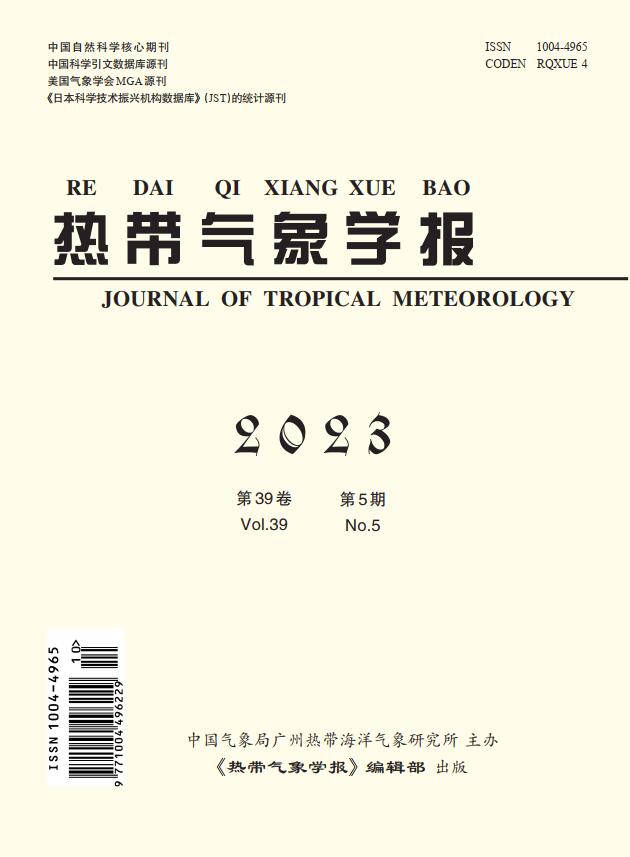Impact of Dynamic and Thermal Forcing on the Intensity Evolution of the Vortices over the Tibetan Plateau in Boreal Summer
IF 1.4
4区 地球科学
Q4 METEOROLOGY & ATMOSPHERIC SCIENCES
引用次数: 1
Abstract
: The Tibetan Plateau Vortex (TPV) is one of the main weather systems causing heavy rainfall over the Tibetan Plateau in boreal summer. Based on the second Modern-Era Retrospective Analysis for Research and Applications (MERRA-2) reanalysis datasets provided by the National Aeronautics and Space Administration (NASA), 8 cases of TPV over the Tibetan Plateau generated in June-August with a lifetime of 42 hours are composited and analyzed to reveal the impact of dynamic and thermal forcing on the intensity evolution of TPVs. The results are as follows. (1) The TPVs appear obviously at 500 hPa and the TPVs intensity (TPVI) shows an obvious diurnal variation with the strongest at 00LT and the weakest at 12LT (LT=UTC+6h). (2) A strong South Asia High at 200 hPa as well as a shrunken Western Pacific Subtropical High at 500 hPa provide favorable conditions for the TPVI increasing. (3) The vorticity budget reveals that the divergence is indicative of the variation of the TPVI. The TPVI decreases when the convergence center at 500 hPa and the divergence center at 200 hPa lie in the east of the TPVs center and increases when both centers coincide with the TPVs center. (4) Potential vorticity (PV) increases with the enhancement of the TPVI. The PV budget shows that the variation of the TPVI is closely related to the diabatic heating over the Tibetan Plateau. The increased sensible heating and radiative heating in the boundary layer intensify the ascent and latent heating release. When the diabatic heating center rises to 400 hPa, it facilitates the development of the TPVs.动力和热力强迫对青藏高原寒带夏季涡旋强度演变的影响
青藏高原低涡(TPV)是造成青藏高原北方夏季强降水的主要天气系统之一。利用美国国家航空航天局(NASA)提供的第二次现代回溯分析研究与应用(MERRA-2)再分析资料,对6 - 8月青藏高原8次寿命为42 h的TPV进行了综合分析,揭示了动力强迫和热强迫对TPV强度演变的影响。结果如下:(1) 500 hPa时TPVs明显出现,TPVI的日变化明显,00LT最强,12LT (LT=UTC+6h)最弱。(2) 200 hPa南亚强高压和500 hPa西太平洋副热带高压的缩小为TPVI的增加提供了有利条件。(3)涡度收支表明,辐散指示了TPVI的变化。当500 hPa辐合中心和200 hPa辐合中心位于TPVs中心以东时,TPVI减小,当两者重合于TPVs中心时,TPVI增大。(4)位涡量(PV)随TPVI的增强而增大。PV收支表明,TPVI的变化与青藏高原的非绝热加热密切相关。边界层感热和辐射加热的增加加剧了上升和潜热释放。当非绝热中心上升到400hpa时,有利于TPVs的发展。
本文章由计算机程序翻译,如有差异,请以英文原文为准。
求助全文
约1分钟内获得全文
求助全文
来源期刊

热带气象学报
METEOROLOGY & ATMOSPHERIC SCIENCES-
CiteScore
1.80
自引率
8.30%
发文量
2793
审稿时长
6-12 weeks
期刊介绍:
Information not localized
 求助内容:
求助内容: 应助结果提醒方式:
应助结果提醒方式:


